By
Mark DiMassimo | 10/19/2021 | in
Looking to improve your LTV (Lifetime Value of a Customer)? I have a story for you.
My friend, a former CMO now a fitness entrepreneur, told me about his version of “The Big Problem.”
I’m willing to bet it’s a lot like the biggest problem you face in your industry.
The second week of every year is the biggest week of gym membership sign-ups. Talk about a great start.
After a visit or two, 9 out of 10 of those new gym members won’t be seen at the gym again.
Fewer than 2 out of 100 will be there by the end of the year.
Think about the influx of gym membership promotions you see leading up to the new year. When putting pencil to paper, that’s a lot of money for an advertiser (like you) to spend on customer acquisition when the retention rate is less than 2%. For all the cost of acquiring 100 new gym members, more than 98 don’t stay.
I can tell you similar stories across a broad range of industries. People don’t do what they know is best for them.
More often than not, they don’t follow through on their best intentions. Your job as a marketer is to help them. And our job is to help you improve your LTV by getting your customers to not only stick, but stay.
START – STICK – STAY
Our 3Ms Model of Positive Behavior Change Marketing process sustains Motivation and increases Momentum through the Moments that Matter for getting more members from START to STAY and beyond.
When twice as many stay, you improve your LTV by twofold, your growth accelerates, and you help many more people create habits that help them flourish. And those habits mean they will stick with your brand.
Would you like to improve your LTV? To get things going, we can give you a 3Ms analysis of your industry and show you how DiGo can blow that out into great creative for your brand. And great creative is the ultimate economic multiplier.
Let me know if you’re interested.
By
Mark DiMassimo | 05/24/2021 | in
We have developed, tested and proven a single core model for building positive behavior change marketing brands and businesses.
Our results show that applying this model can improve return on marketing spend by up to 10x and more.
The 3Ms Model for Behavior Change Marketing
MOTIVATION and MOMENTUM in the MOMENTS that matter
The 3Ms model says that you build a behavior change brand by combining Motivation x Momentum in the Moments that Matter. So, let’s break it down.
Motivation comes from meaning or why you want to do a thing. The more motivated you are to do something, the more likely you are to do it.
Momentum is the energy for moving forward in a given moment, and in that moment, there must be a trigger to action, and that trigger to action needs to be easy. Easy to see, easy to comprehend, easy to achieve. But ease is not enough for optimal results. Inner momentum must be activated as well.
Moments that Matter are the decision points along the journey that make all the difference. It makes sense to find the bottlenecks and use behavior change marketing to blast them wide open.
Why one core model?
As an expert marketer, you already bring a wealth of models to building brands and revenues. While much of what you know will be applicable, there are crucial differences in building a brand that people choose to change their lives by changing their behavior.
Building a brand for behavior change is simply different.
While differentiation matters most in building a brand, motivation is essential in building a behavior change brand.
When we want to change behavior—say, to get fit, lose weight or do more deep work—we tend to focus on motivation, so having the brand enhance motivation at each key decision point is essential.
Yet, there’s something even more important than motivation. Momentum matters even more.
Making it easy to do a thing works better than making it matter more. If you want to change something, find the key behavior and use your design brain to make it easier to do.
If you are doing it for yourself, it works this way:
- To drink more water, put the glass of water by your bed at night.
- To get on a regular sleep schedule, leave your alarm clock (or phone) across the room.
- To eat healthier, put the healthy foods at eye-level in your pantry or fridge.
If you are doing it to improve your marketing results and your customer, client or member success, then design momentum into your key touchpoints.
Designing in “ease” isn’t enough. Inner momentum is more than just ease. It’s activating the fast-thinking brain. Behavioral science and marketing testing have uncovered hundreds of ingenious ways to do this, each of which can add significant value.
At DiGo, we’re using the 3Ms Model of Behavior Change Marketing to build the brands and businesses that help people, organizations and communities thrive. If that’s you, let’s talk!
By
Mark DiMassimo | 10/08/2020 | in
This story starts with a CMO getting fired, two months into a hundred million dollar campaign.
Fired, after hiring one of the best agencies in the business.
The campaign was expensive to produce. The whole team was so excited that they added a million dollars to the production budget to produce an additional spot.
The goal of the campaign was to recruit more users and activate them.
And here’s the rub – from the day it launched, this campaign drove recruitment numbers down.
Down is what led to out.
The CMO had been a strong marketer, with a record of selling consumer packaged goods, and sweet and salty snacks. But this was a different kind of organization – a behavior change marketing company.
The problem was, this company didn’t understand that they were in the behavior change marketing business.
All the senior leaders came from private equity or packaged goods.
Yet this company had a mission to help people improve their wellness. It did so through memberships and subscriptions with a heavy component of education and community.
A year earlier, our friend and former client had gone over to this company to work for the now-former CMO.
Our friend also had a package goods marketing background. To help our friend succeed in his new role, we told him,
“You’re playing a whole new game now, and this game is different. It’s behavior change marketing. That means recruiting members, selling subscriptions, building relationships, smoothing out gaps, drags, and blocks in the membership experience, designing for motivation and momentum at each moment, building a community. You’re playing the long game now.”
He listened politely and then said, “I think you’re right, but I’m new here. My boss has a plan. Let’s see how it goes.”
A year later, after the failed campaign and selling season, we got the call.
“The game plan you were telling me about… I need that now. And I don’t have much time to show a success.”
Behavior change must be taken in steps. It is a series of actions.
Actions are the result of motivation and ease coming together at the same time. The brand can help drive motivation, while design informed by behavioral science can reduce friction and complexity.
Solving the wrong behavior problem at the wrong time is too common. In the true story I told at the top of this post, the failed campaign aimed to recruit new members but focused on a promise to help them through the challenging times down the road.
After that decision, nothing else really mattered. The wonderful creativity of the agency people who worked on the campaign didn’t matter. The amazing production values and gorgeous editing of the spots didn’t matter.
The brilliant integration across platforms, digital and traditional advertising didn’t. The excellent media planning and buying only served to spread the fatal message virus. The wonderful public relations program only ensured that failure would be a famous one.
If you are in the business of helping people make better decisions or form more empowering habits, you are in the business of behavior change. Whether healthier, wealthier, wiser, kinder, saner, calmer, less anxious, better for the planet, happier, fitter, more resilient, a better citizen, better educated, or even just better entertained, if you are helping people to become better versions of themselves, you are in the business of behavior change.
If you are disrupting a category, you ask people to make a different decision and build a different habit. You are in the business of behavior change.
If you are working at a non-profit trying to scale positive impact, you are in the business of behavior change.
Marketing, branding, advertising, design, content, and community building for behavior change are different.
When marketers are new to behavior change, their agency contacts aren’t truly knowledgeable about the full range of behavior change marketing skills.
Most agency experience is still packaged goods experience. Shallow strategic thinking about awareness and preference may be appropriate for driving decisions between adjacent cans of soup on a grocery store shelf. This level of thinking is misapplied to behavior change
That’s why assembling a team to tackle these challenges is different too. When you work with the right team, you can achieve amazing and important things.
We can help great marketers become successful behavior change marketers. CEOs and Investors bring us in or recommend us for exactly this purpose.
This story has a happy ending.
We got to work with our friend on this brand and put in twelve quarters of record revenue growth before he left to take the CMO job at another company where his now proven behavior change marketing chops would be highly valued.
Of course, he hired us to work there too, so we got another great brand to work on. And the new management of the now successful first company have been great clients to us ever since.
Increasing recruitment led to over five million people enjoying the life-changing benefits of our client’s excellent service.
As one of our clients likes to say, “Now that ain’t salty snacks.”
About DiMassimo Goldstein (DiGo)
DiMassimo Goldstein (DiGo) is a Behavior Change Marketing agency, trusted by sophisticated marketers and committed change agents to understand complex situations quickly and to bring forward highly-effective creative solutions.
DiGo helps life-changing brands grow by helping people make more inspiring decisions and form more empowering habits.
The brand, advertising and design agency’s clients, from start-ups to blue chips, have built legendary brands that inspire action.
DiGo is applied behavioral scientists, growth strategists, brand planners, designers, writers, marketers, data storytellers, technologists, social and digital media experts, project managers, producers, artists and brand leaders – all of them change agents.
By
Mark DiMassimo | 10/08/2020 | in
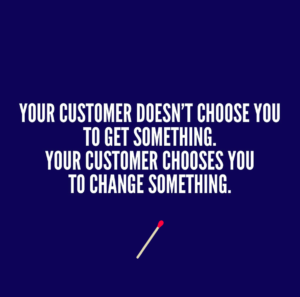
Warby Parker doesn’t sell eyeglasses.
Warby Parker sells a behavior change – a different way to buy eyeglasses.
Peloton Interactive doesn’t sell an exercise bike.
Peloton sells a behavior change – a way to make sure you exercise and keep exercising, no excuses.
Airbnb doesn’t sell rooms and apartments.
Airbnb sells a behavior change – a different way to travel.
Uber doesn’t sell rides.
Uber sells behavior change – a different way to get from here to there and a different way to earn a living too.
Dollar Shave Club doesn’t sell razors.
Dollar shave club sells a behavior change – a different way to buy razors.
HelloFresh doesn’t sell meal kits.
HelloFresh sells a behavior change – a way to make home cooking fit modern life.
Sun Basket doesn’t sell meal kits.
SunBasket sells a behavior change – a way to cook Paleo or Whole30 or Vegan…
Stitch Fix doesn’t sell clothes.
StitchFix sells behavior change – a totally different way to get yourself dressed.
If you’re in the direct-to-consumer business, you’re a behavior change marketer. Period.
Your customer doesn’t choose you to get something.
Your customer chooses you to change something.
You are in behavior change marketing.
Branding for behavior change is different.
Designing for behavior change is different.
Content for behavior change is different.
Advertising for behavior change is different.
Marketing for behavior change is different.
By
Mark DiMassimo | 10/06/2020 | in
 “We can’t solve your problem because we haven’t done our strategic work yet.”
“We can’t solve your problem because we haven’t done our strategic work yet.”
When I worked at other agencies, I always thought this to be the ultimate bureaucratic blindness.
Building the BRAND While We Build The BUSINESS.
This is the core promise of our agency, DiMassimo Goldstein. This is the experience our clients have bought when they’ve bought us.
Not: “First we’ll build the brand, then we’ll build the business.”
Not: “First we’ll build the business, then we’ll build the brand.”
Instead, we do both, and simultaneously. Like you do!
Sometimes this translates as “Building the brand while lowering the cost of acquisition.” Sometimes it’s “Building the brand while driving sales efficiency.”
Sometimes it’s just “Growing the business and the brand.”
Our clients never wait months to see returns from an agency engagement. We typically deliver measurable revenue within the first 30 days, and we don’t have to sacrifice future success to do it.
We call it two-track planning, and it’s implemented in everything we do. Imagine two columns on a page, the left titled URGENT and the right titled IMPORTANT.
Some urgent things are truly unimportant, but some we term “The Runway.” The board meeting coming up. The quarterly results reporting. The partner’s meeting.
If a plane doesn’t get aloft by the end of the runway, it doesn’t matter how good the food service and the movie was going to be. There are things you just need in the short run to make the long run possible. Often these things include results. That’s the Runway.
And, we don’t lose our strategic heads. We see the long-term opportunities in urgent problems. We see growth in behavior change.
And we manage them both, so that our clients can move forward, paying for tomorrow’s opportunities with today’s wins, all while strategically planting the seeds that ensure growth for the future in a time-starved world.
Yes, we build the brand. Yes, we build the identity and design the brand. Yes, we develop a theory of growth and build out a marketing plan. Yes, we develop advertising and content. Yet, we view all of this through a Behavior Change Marketing lens.
In short, behavior is where brand and business meet. Until someone acts, nothing changes. Until behavior changes, businesses don’t grow. Behavior is the intersection of meaning and emotion.
Every KPI in a business is driven by a Key Behavioral Indicator. Behavior drives results.
By keeping our eye on the behavior and the result, we see eye to eye with our clients as we accelerate value creation for the business.
By
Mark DiMassimo | 10/06/2020 | in
Your name and your logo are the essential seeds of your brand identity. No brand strategy can really get off the ground without these essential elements of identity. Start-ups need to build the brand foundation to power the growth-stage company they will one day be.
Your brand is your most powerful behavior change tool. If you’re disrupting a category, building a new one, promoting a new way of doing things, building subscriptions, memberships, community or a habit, then you’re in the business of behavior change.
Branding for behavior change is different. It’s tools for the present and tools for the long road, for each stage of the customer journey.
That said, it hard for me to imagine “no logo.”
Of course, the company will have a name. If the company has a name, you will need to represent the name in some way. Anyway you choose to represent the name will appear as “the logo.”
If you don’t designate a way of representing the name then you might use whatever typeface you’re working in at any given time to represent the logo.
Apple. Think different.
Nike. Just do it.
DiMassimo Goldstein. Inspiring Action.
This variability will be, in effect, your logo. And, it’s pretty bad.
So, then the question is – what would be worse? A good way to begin to think about this is to think of the strengths of this particular approach to the logo.
For one thing, it’s readable.
An unreadable logo would be worse, especially if the brand wants to stand for clarity, simplicity or ease-of-use.
Apple’s use of the apple icon with the bite out of it isn’t unreadable. We say it’s “iconic” precisely because people look at it and immediately think Apple. Not everyone, of course, but enough people do.
Same goes for Nike’s Swoosh.
The approach to the logo above also has the strength of feeling appropriate for the context it’s in. On the other hand it doesn’t stand out, but blends in.
Kim Kardashian. Nothing to see here.
Blending in is a brand value for some companies, but not for others.
Another thing you can say for the variable Zelig (the Woody Allen character who took on the appearance, dress and behavior of whoever he was with) logo is that it is not especially ugly or stupid or crass or inappropriate.
Diesel. bE sT0oPid
Diesel actually had a successful “Be stupid” campaign. The idea: smart is boring; stupid is more fun. A stupid logo might make sense for them, but would be an absolute disaster for Wells Fargo.
Wells Fargo. sTuPid in LoVE wITh yOUr MoNEy
I would propose that you start out with a good-enough logo.
I started my own company with DiMassimo Inc. as the name, using the Courier typeface that used to be associated with typewritten material. It was the mid 1990s and the world was full of wild, pixelated, digital-influenced type faces, so I thought that Courier said that we didn’t need any flash or pretense – in short, it showed confidence.
It worked well enough until we had a better logo and identity designed.
Apple started as Apple Computer Co. They didn’t have such a great logo.
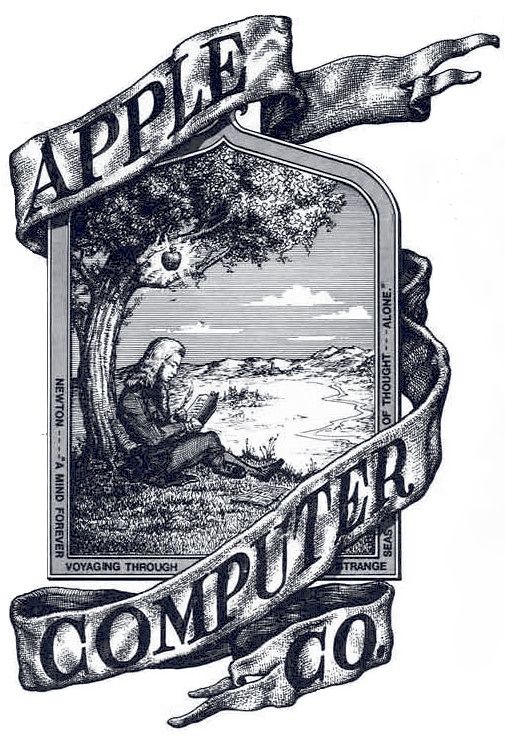
Microsoft’s first logo was OK…

Amazon’s first logo was no great shakes…
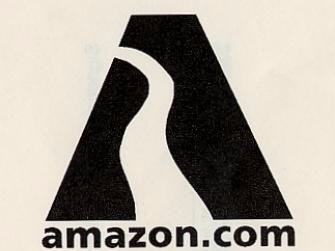
But there is such a thing as a truly awful logo. Some people think Pepsi’s logo is not so great:

Doughboys Pizza has cleaned up its logo since this one. I know what you’re thinking – no, with a designer!
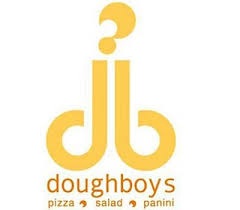
Also, today it’s important to make sure your logo isn’t offensive in and outside your own borders and culture. This one from Locum in Sweden is particularly unfortunate.
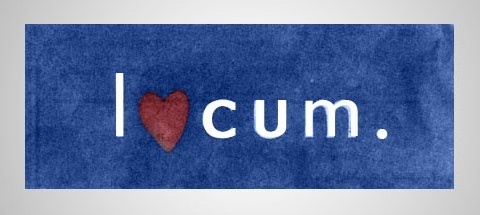
I tried hard to confirm this last one because it’s a pretty unbelievable fail. From all I can find it appears real, although it may have been a company holiday card design rather than an all-year logo. The company currently has a more regular typographic mark, which now looks more like I o cum. So, better.
Now, you know a firm with just this specialization, because you know our name and you know our logo.
By
James Nieman | 10/06/2020 | in
Google launched into a market already dominated by NetScape.
Google had a behavioral strategy – get people to make Googling a habit.
There were three pillars:
1) Easier results.
2) Faster results.
3) Better results.
The first is the one most would miss.
Behavioral science tells us that most marketing strategies overemphasize motivation. Moderately motivated people are more likely to do what’s easy than highly motivated people are to do what’s hard.
Ease beats motivation. That explains the fate of most New Year’s Resolutions.
Google’s competition had gone in for massive cross-selling and indexing.
Yahoo and Netscape’s homepages were cluttered with links.
Behavioral economists confirm what direct marketers long knew – choice depresses response.
Why, because simple is easier, and ease is the single most important factor in designing for behavior change.
Google had a simple search bar, a logo and that’s it.
Faster is easier.
And, the distance in time between action and reward increases effectiveness geometrically.
That’s why Google uses a little of its precious homepage real estate – to tell you exactly how many nanoseconds it took to get your result.
Learn more about behavior change marketing, free: http://ow.ly/3txx30nhBN0
By
Team DIGO | 10/06/2020 | in
Warby Parker doesn’t sell eyeglasses.
Warby Parker sells a behavior change – a different way to buy eyeglasses.
Peloton Interactive doesn’t sell an exercise bike.
Peloton sells a behavior change – a way to make sure you exercise and keep exercising, no excuses.
Airbnb doesn’t sell rooms and apartments.
Airbnb sells a behavior change – a different way to travel.
Uber doesn’t sell rides.
Uber sells behavior change – a different way to get from here to there and a different way to earn a living too.
Dollar Shave Club doesn’t sell razors.
Dollar shave club sells a behavior change – a different way to buy razors.
HelloFresh doesn’t sell meal kits.
HelloFresh sells a behavior change – a way to make home cooking fit modern life.
Sun Basket doesn’t sell meal kits.
SunBasket sells a behavior change – a way to cook Paleo or Whole30 or Vegan…
StitchFix doesn’t sell clothes.
StitchFix sells behavior change – a totally different way to get yourself dressed.
If you’re in the direct-to-consumer business, you’re a behavior change marketer. Period.
Your customer doesn’t choose you to get something.
Your customer chooses you to change something.
You are in behavior change marketing.
Learn more about behavior change marketing here. It’s free. No funnel:









